The Problem:
Scavenger hunts can be time-consuming to set-up, coordinate, and judge. Timing is also a vital element. Teams cannot afford to waste it by flipping through pages of poorly organized lists or navigating clunky interfaces.
The Solution:
This app should have a highly intuitive interface that doesn’t force the user to waste time endlessly scrolling or jumping around screens. It should have a robust messaging platform that allows communication on multiple levels (moderator to participants, teammate to teammate, etc.). Finally, the app should do whatever it can to alleviate the workload for the user--whether that be through pre-loaded challenges, accurate live updates, or automatically organized and calculated challenge submissions.
Role:
UI/UX Designer
Tools:
Balsamiq
Sketch
Photoshop
Illustrator
InDesign
Invision
The Approach
Observations and Insights:
In this early stage, I researched the scavenger hunting apps that are currently available. I also conducted user interviews to meet users face-to-face and learn about their experiences with scavenger hunting and social gaming apps. Competitive research analysis and user interviews both helped me see what user needs the market has not yet met--seamlessly integrated social features with an intuitive interface.
Scavenger Hunt Survey
Scavenger Hunt Survey-Results
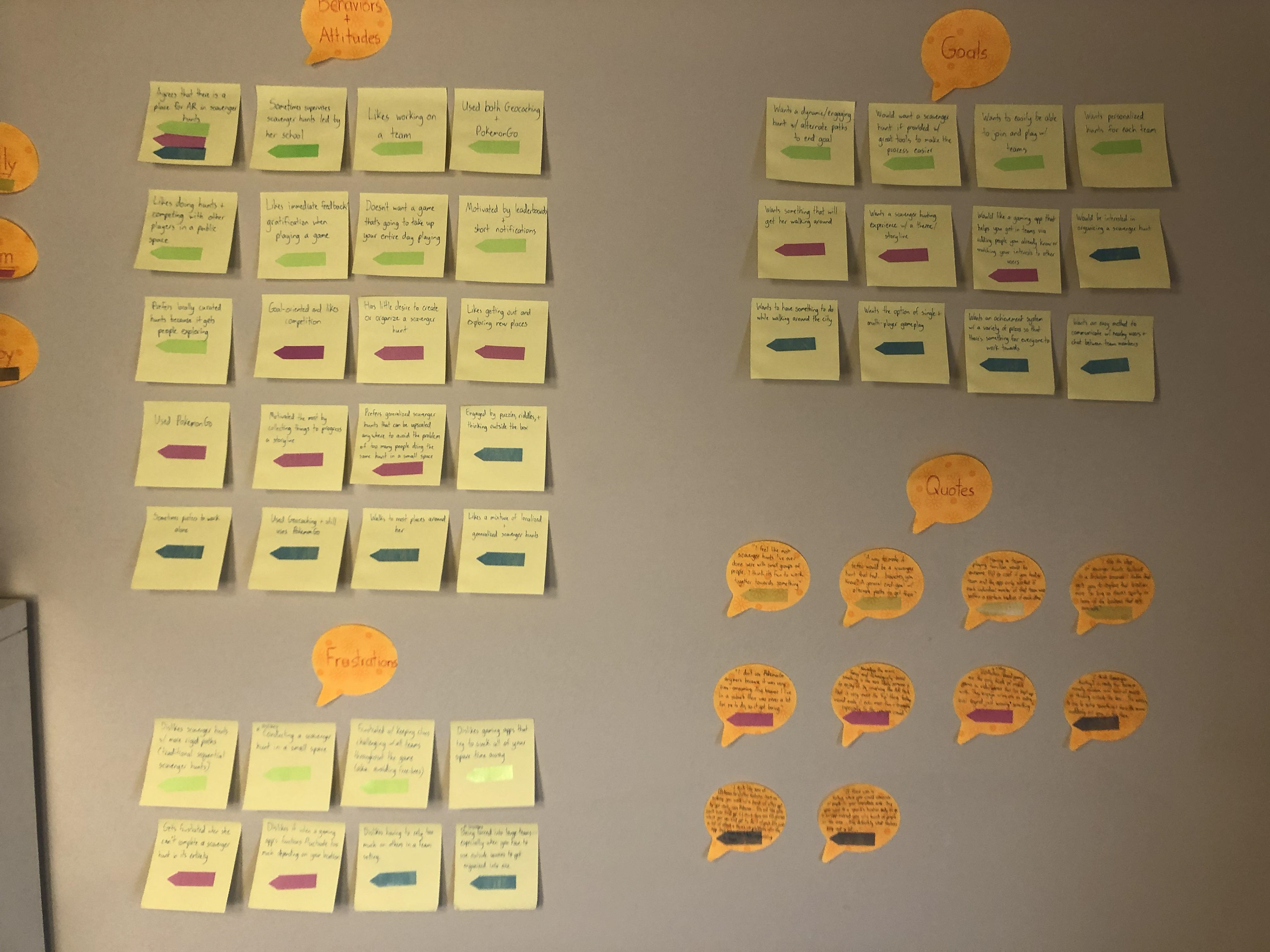
User Interviews-Affinity Mapping
Conceptualization:
User personas were based on data gathered from research and interviews.

Persona- Lina Abbott
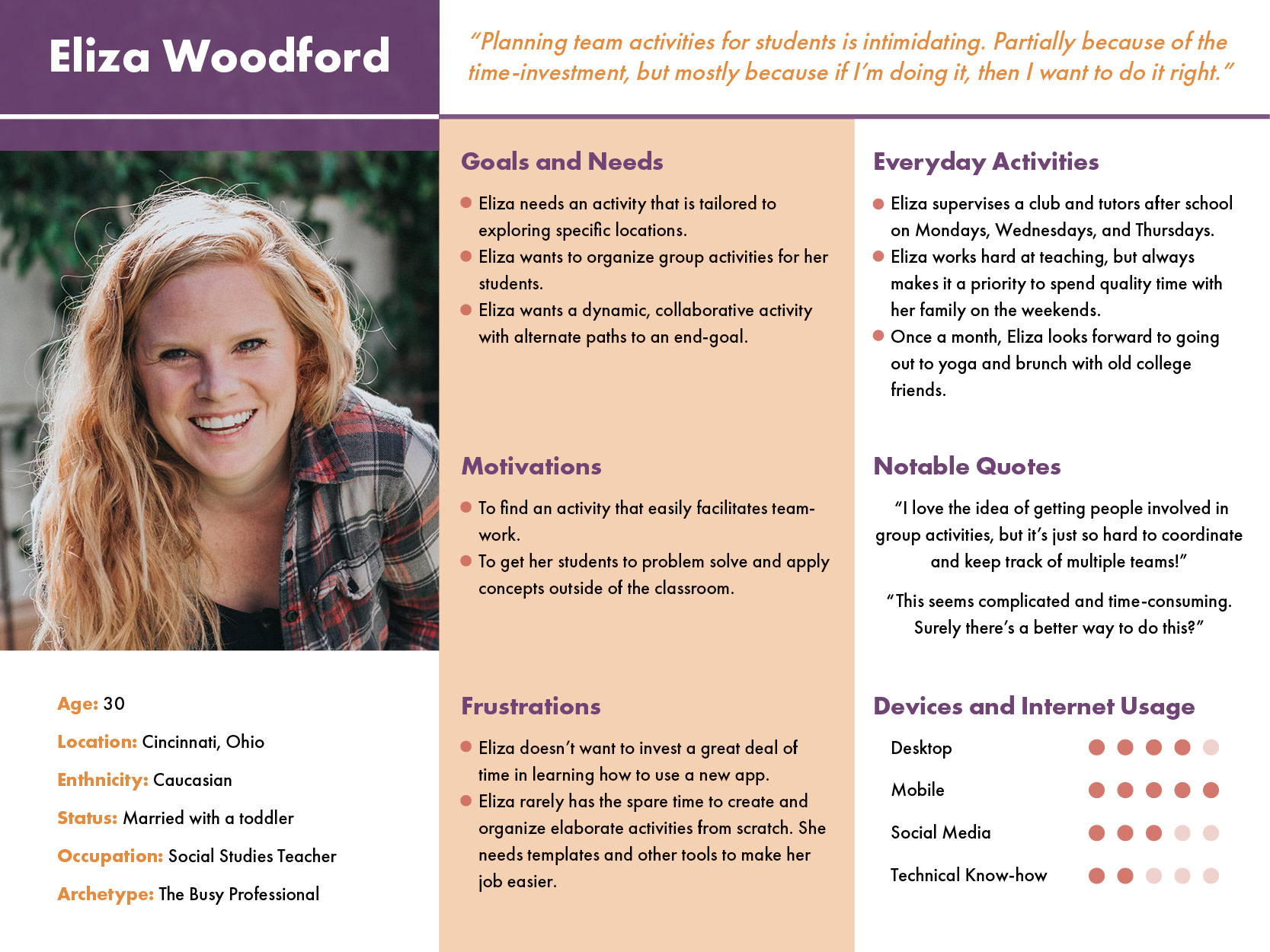
Persona- Eliza Woodford

Persona- Alex Wong
From this stage, the information architecture for Schnitzeljagd began to take shape through user journeys and user flows.
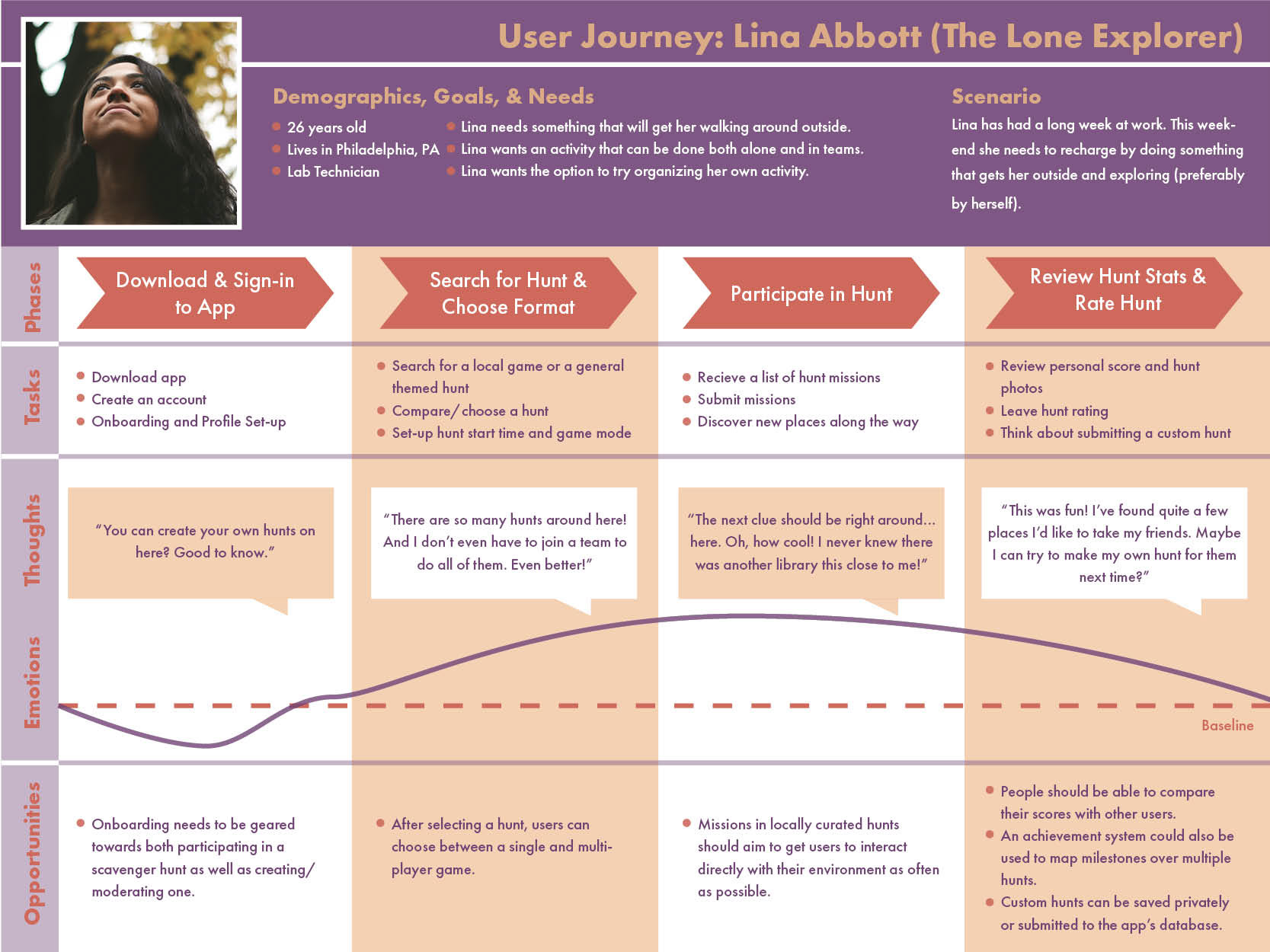
User Journey- Lina Abbott
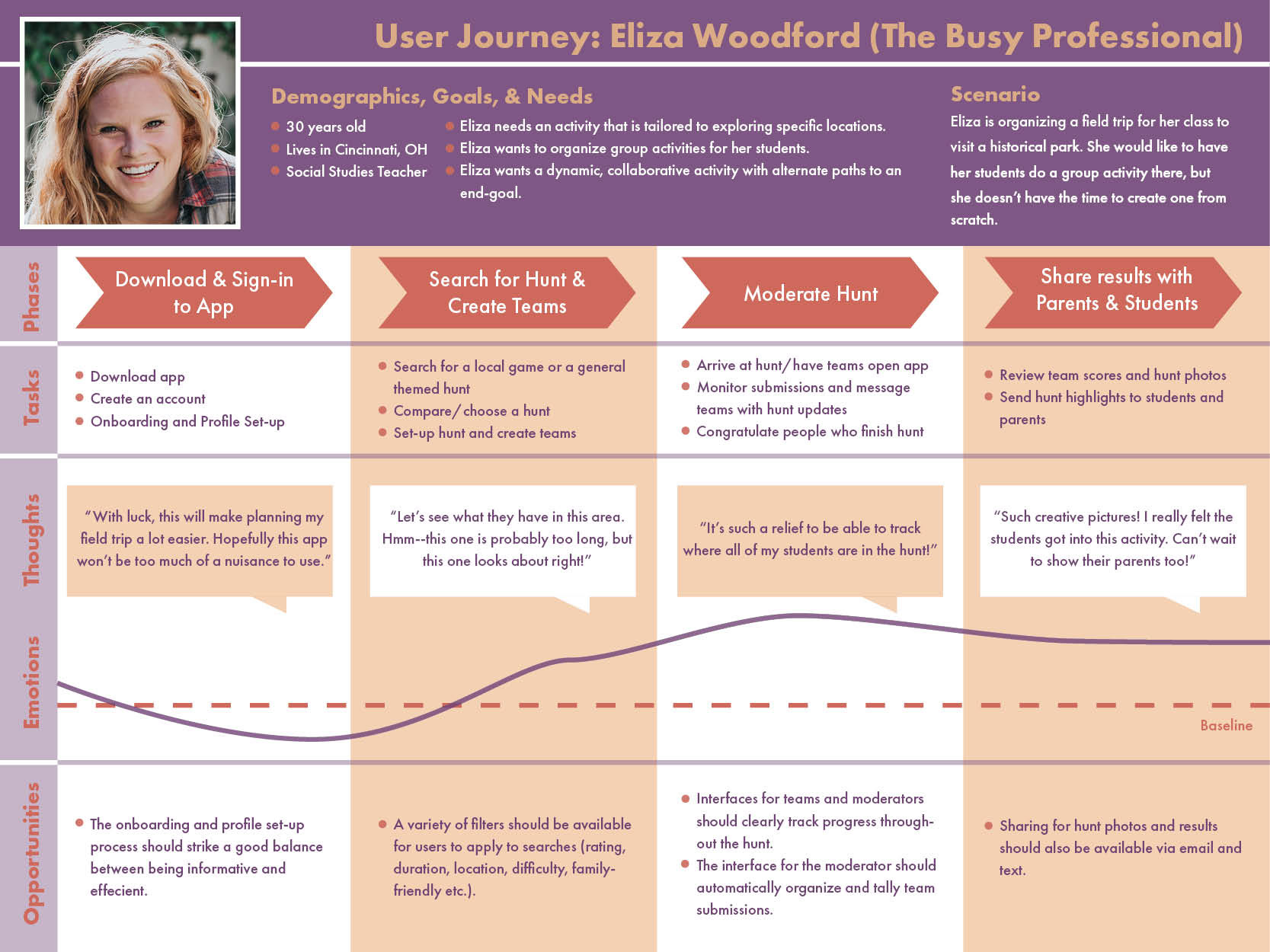
User Journey- Eliza Woodford

User Journey- Alex Wong

User Flow- Lina Abbott
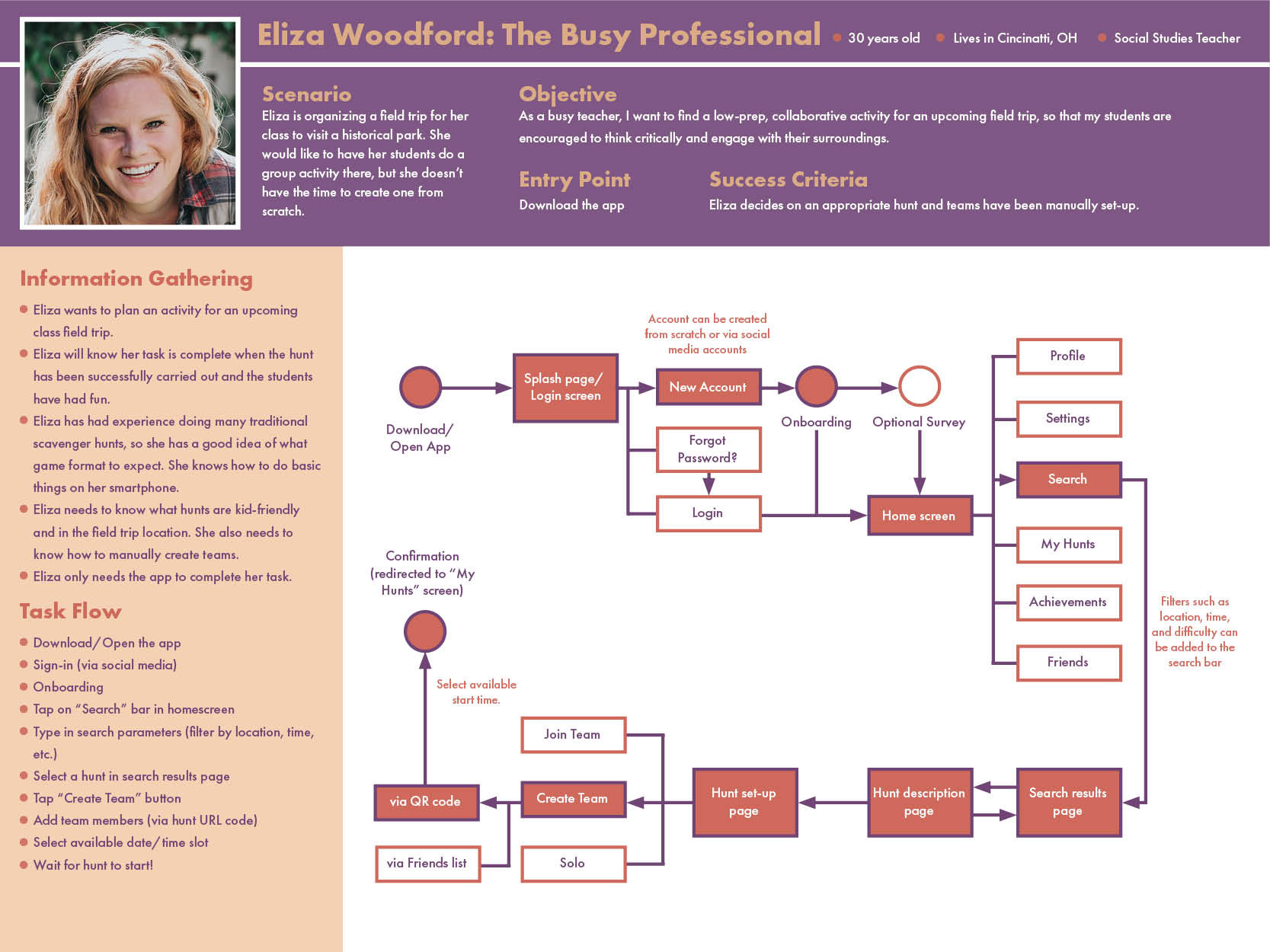
User Flow- Eliza Woodford

User Flow- Alex Wong
The app's preliminary framework was finally put to the test through card sorting.This helped me rework the sitemap that the prototype would be based on.
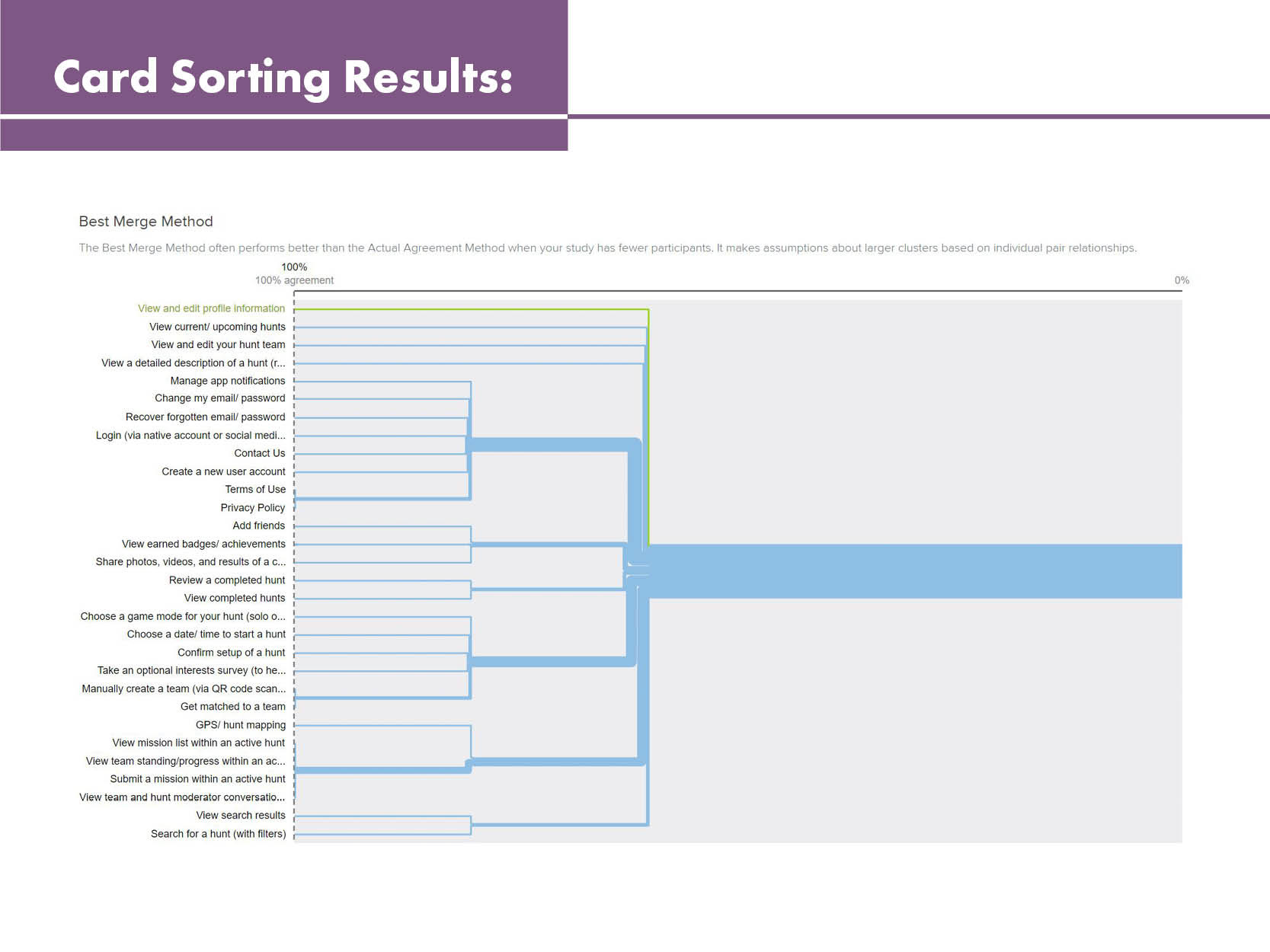
Card Sorting Results
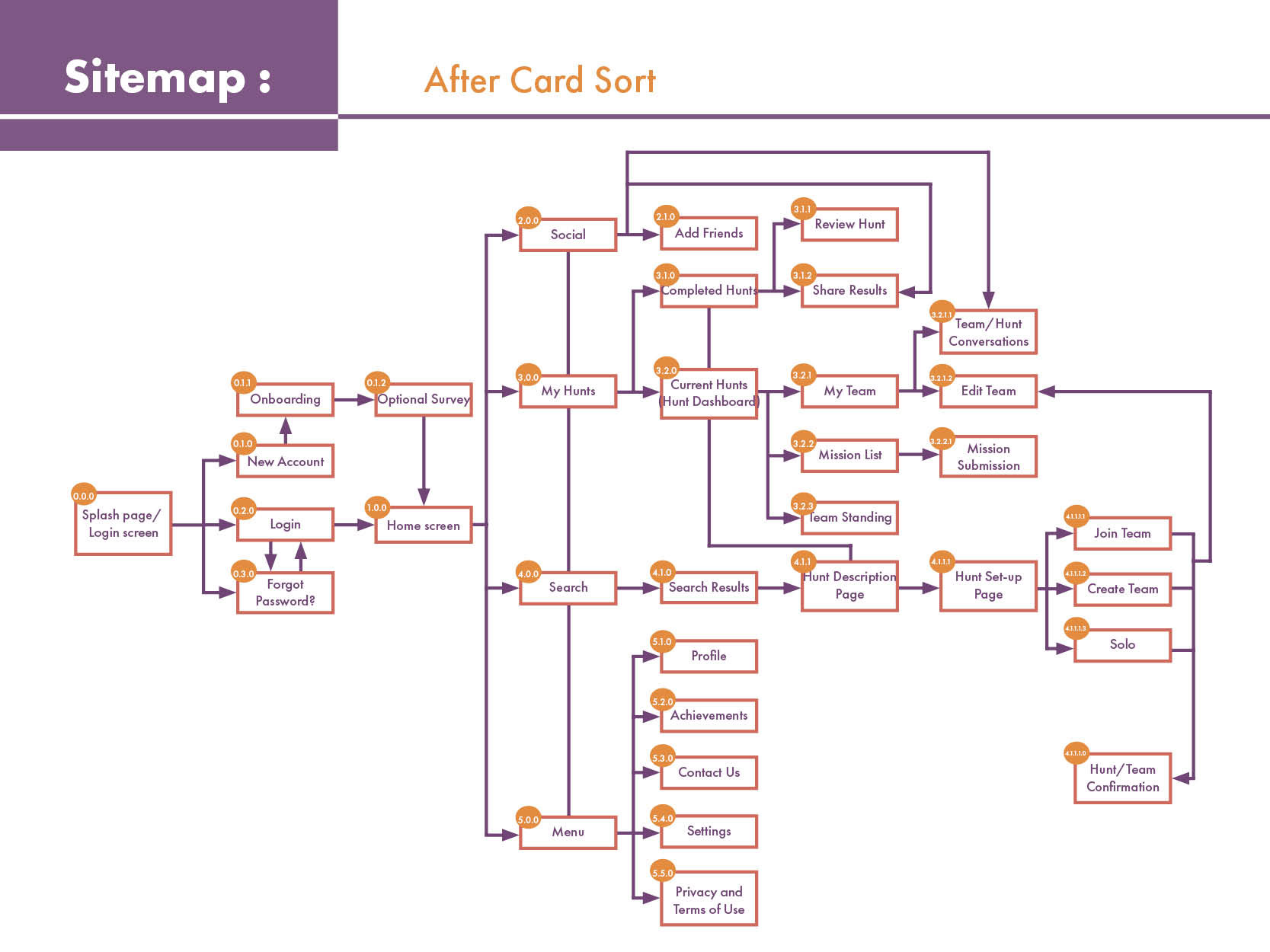
Revised Sitemap
Iteration:
With a basic structure in place, it was time to bring the prototype to life! The wireframes began with rough sketches on pencil and paper. From there, I continued to make adjustments and add details until I had a testable prototype.
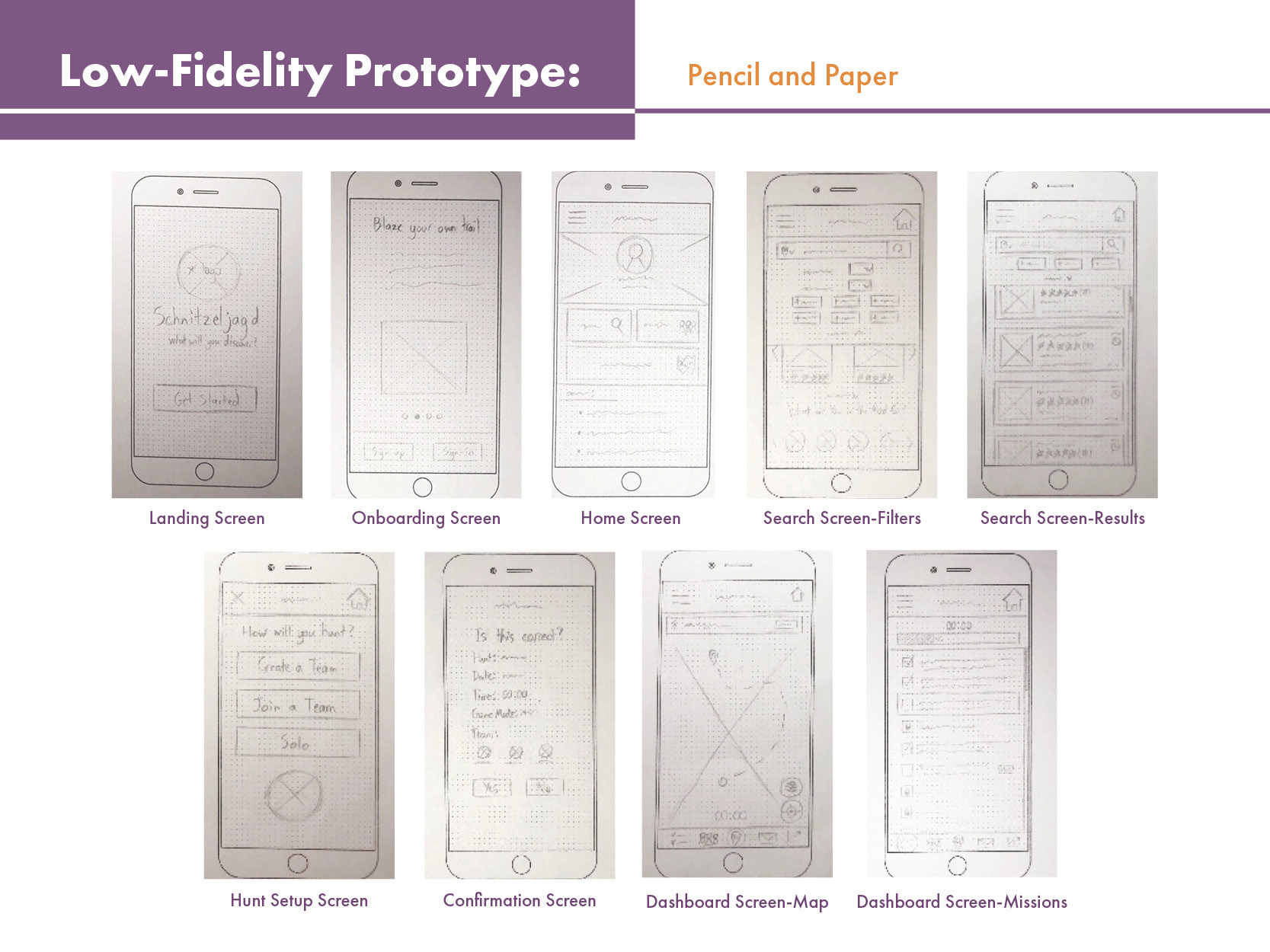
Low-Fidelity Wireframes
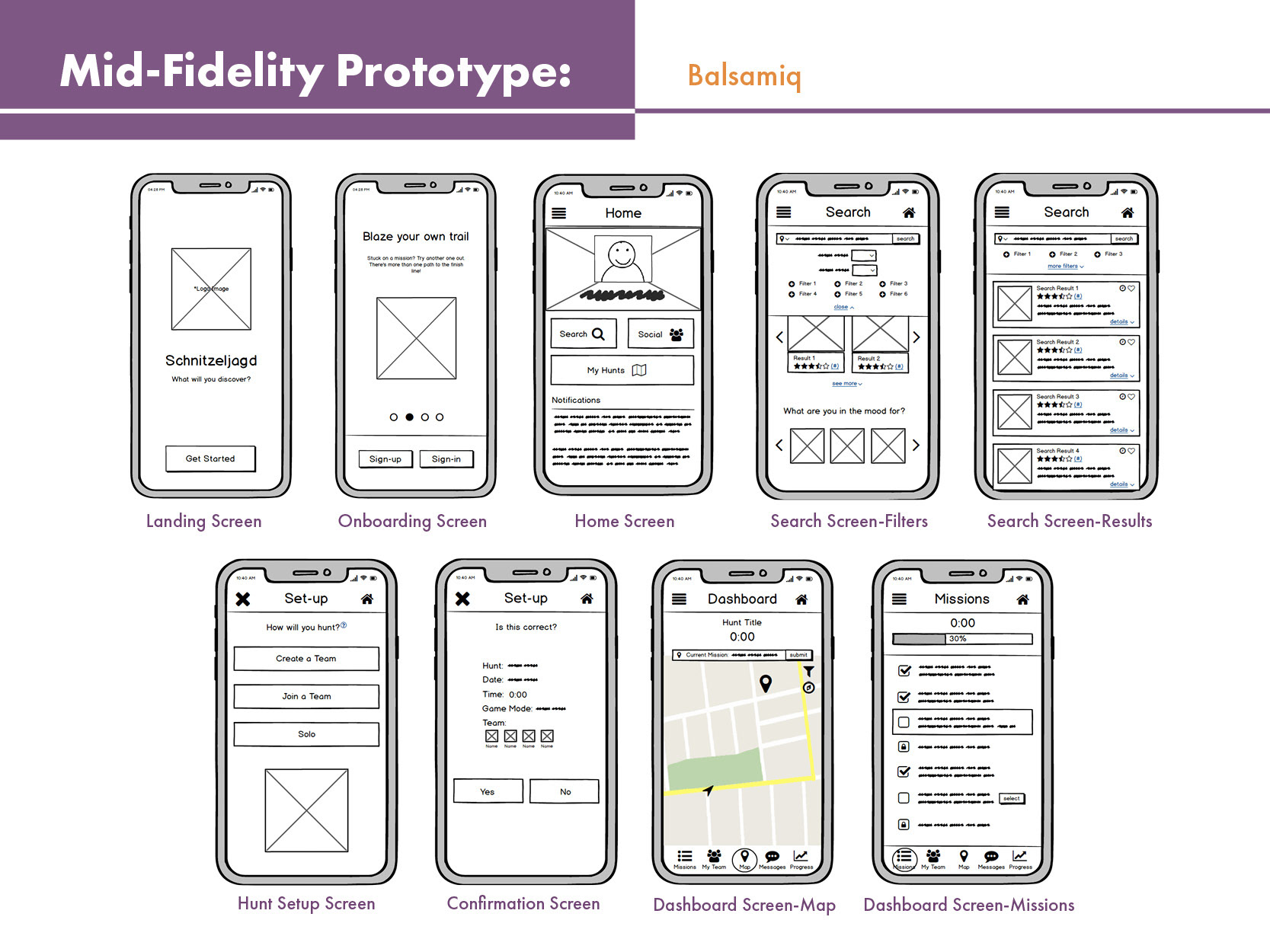
Mid-Fidelity Wireframes
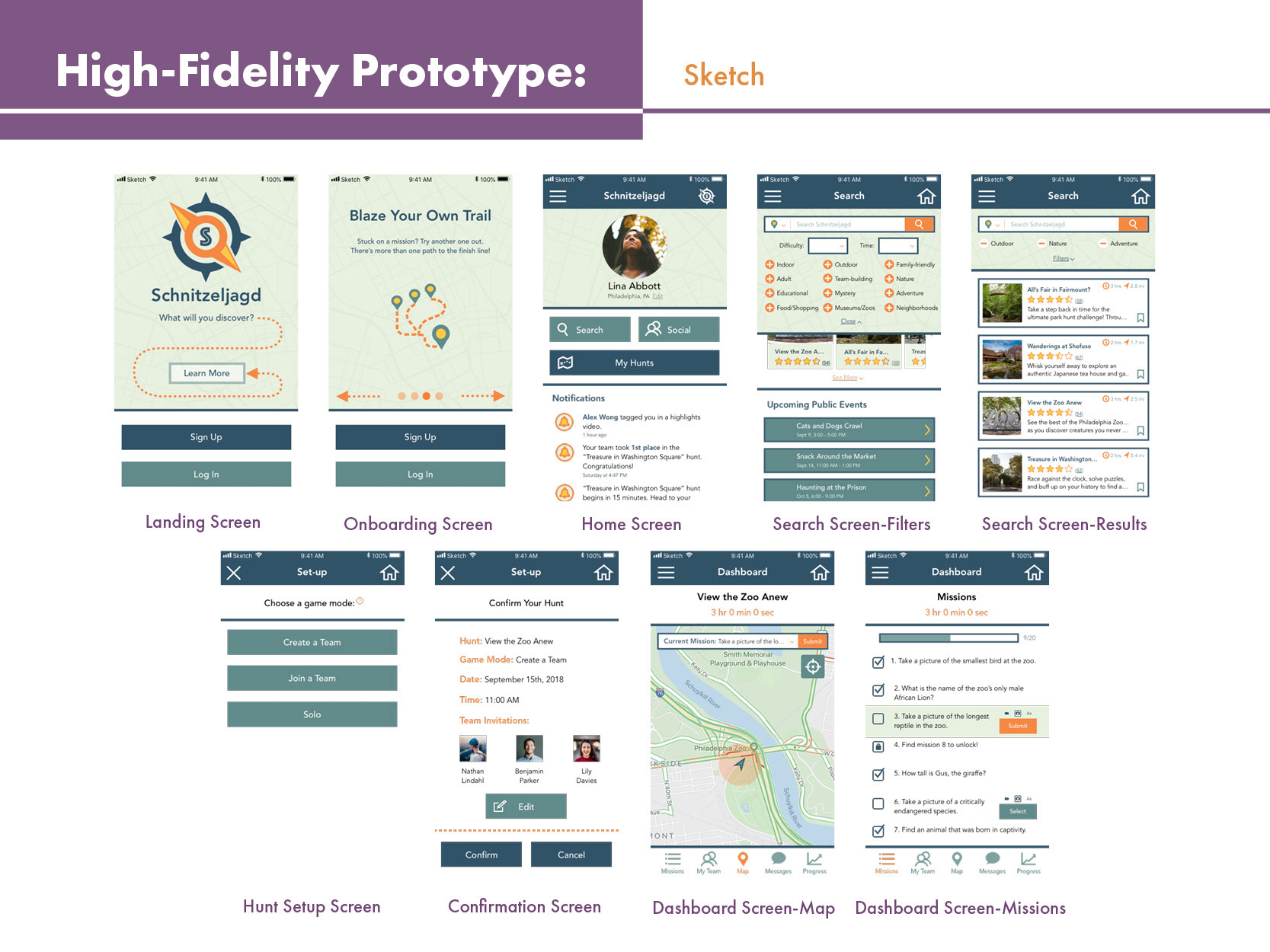
High-Fidelity Wireframes
In the first round of usability testing the main goal was to test the functionality of Schnitzeljagd's core features--setting up a scavenger hunt and submitting a mission in an active scavenger hunt. These were the three most severe issues:
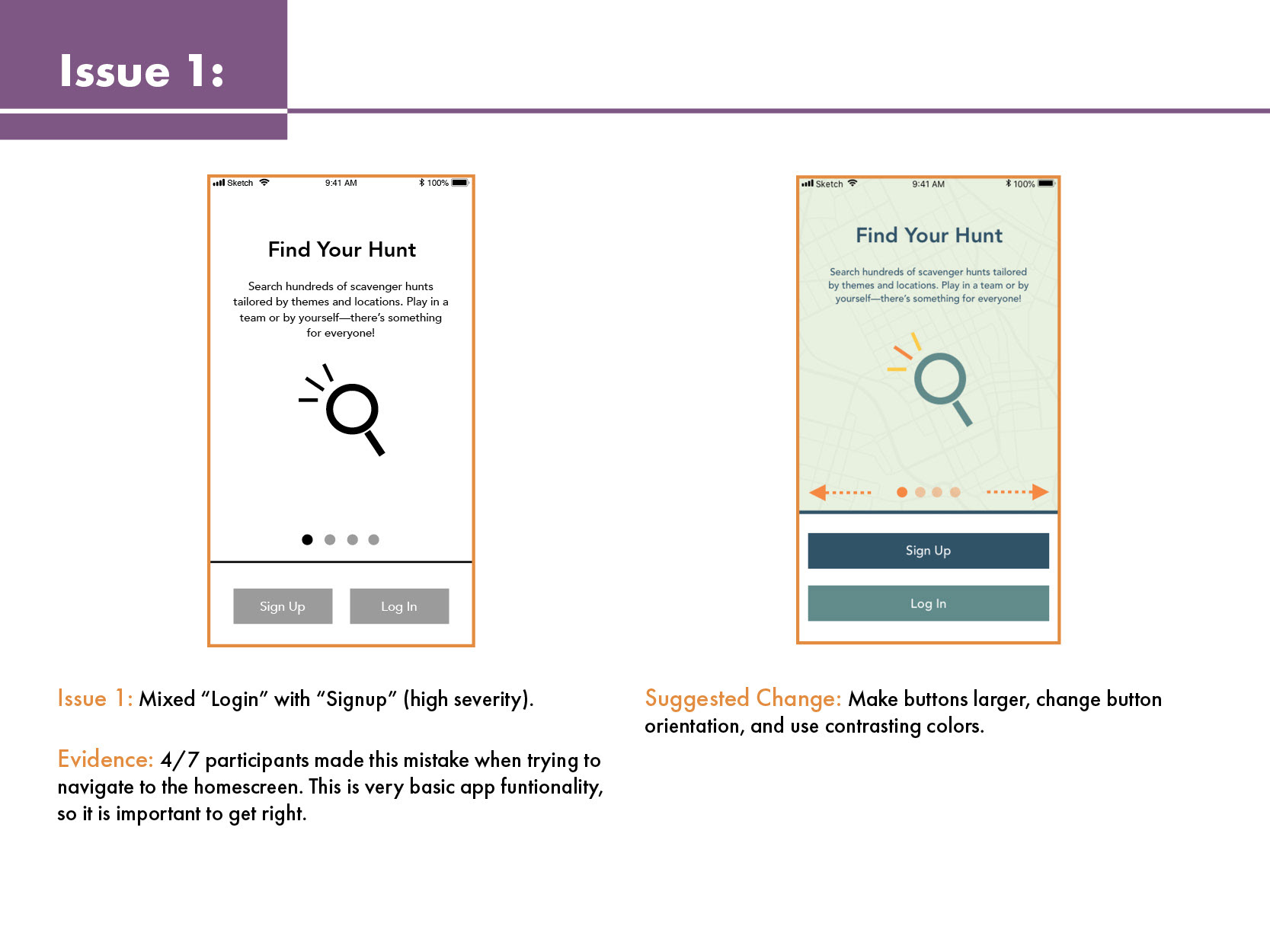
Issue 1
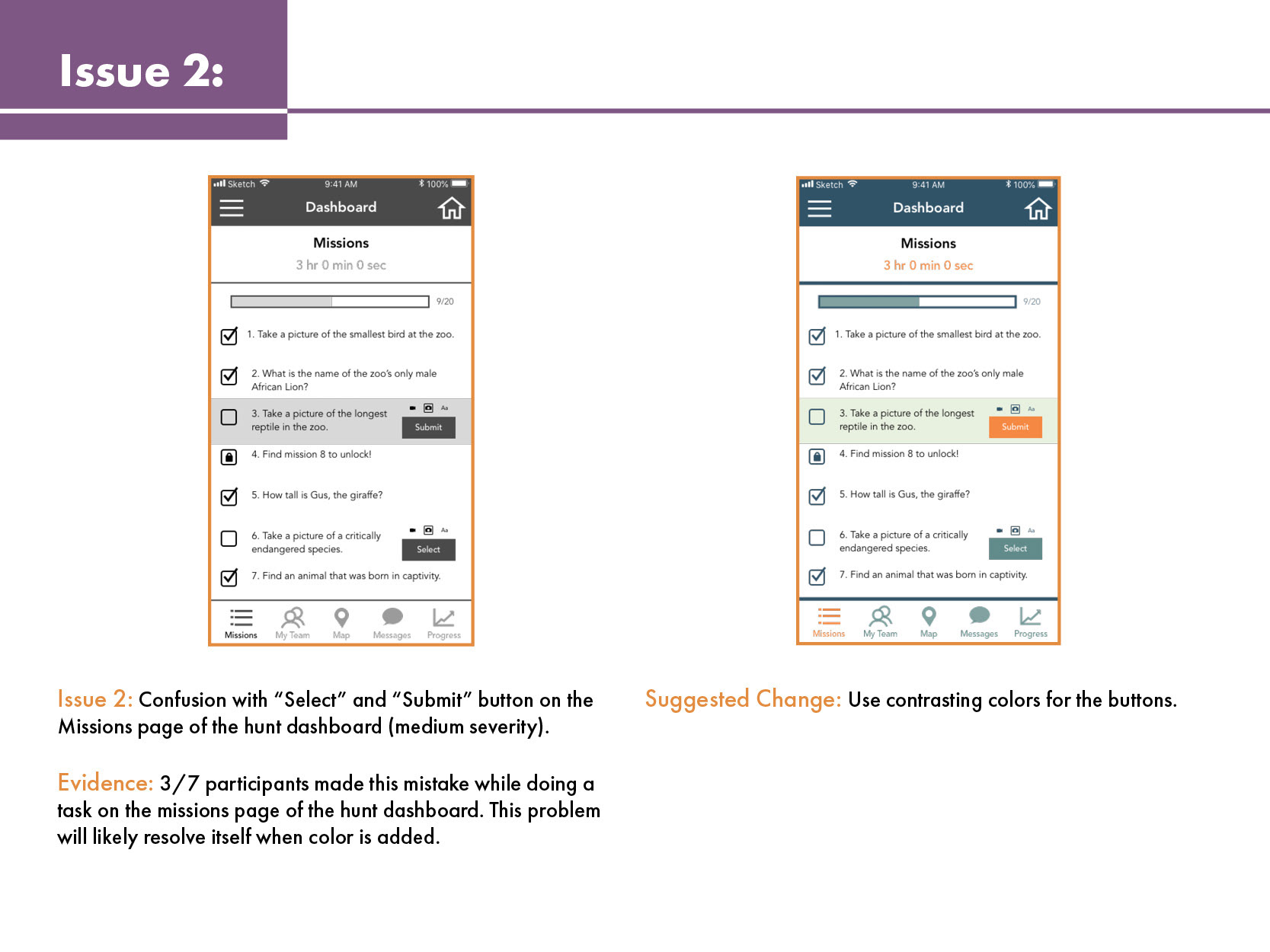
Issue 2
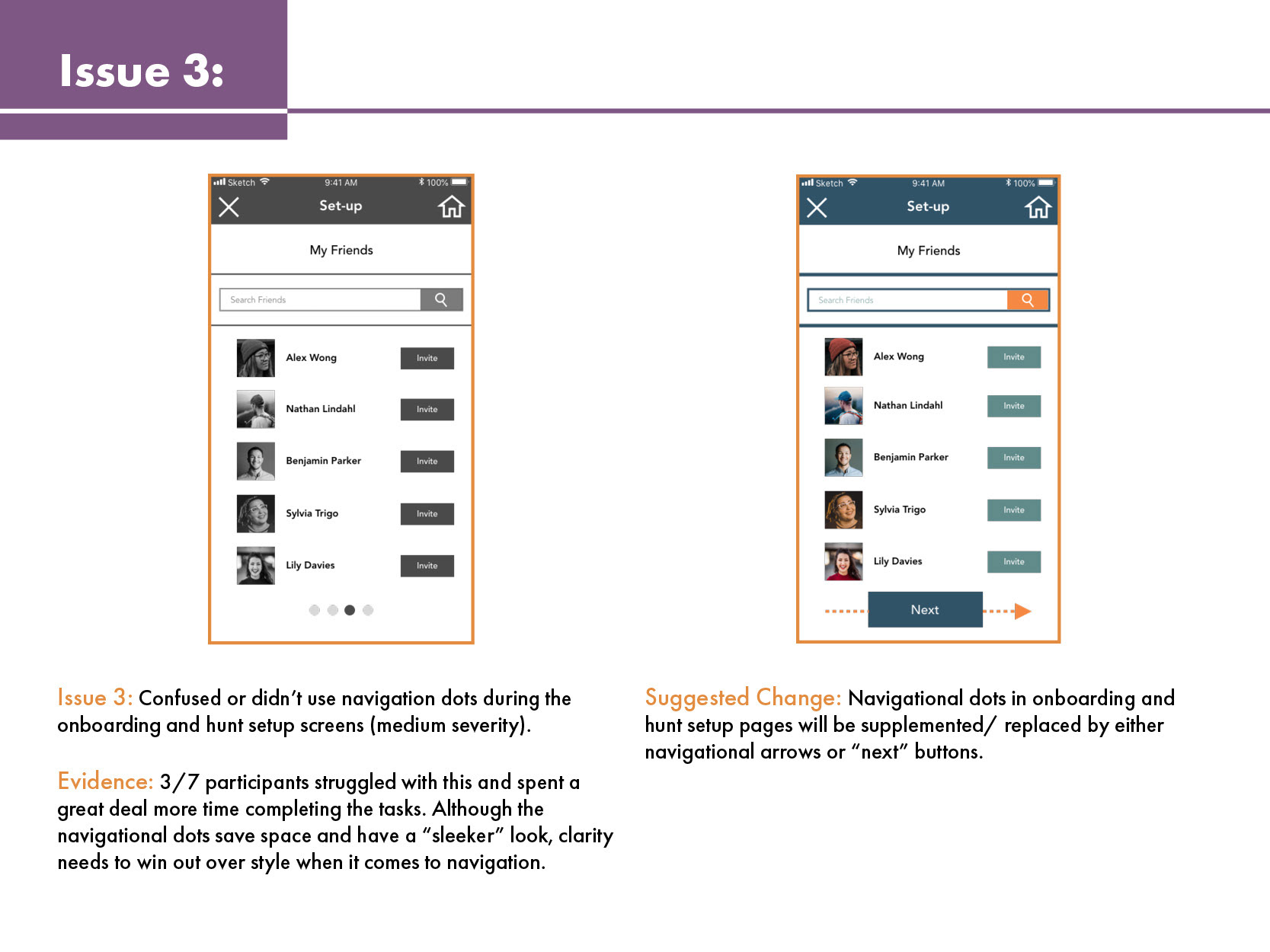
Issue 3
Due to the divided opinions on how the app's landing and onboarding screens were presented, I decided that this would be a good area to conduct a preference test.

What Was Tested

Testing Results

Design Updates
Using these new sets of data, I had enough knowledge to start making improvements to the prototype! I also paid close attention to incorporating more Gestalt Properties and Visual Design Principles. A style guide was compiled from the improved prototype.

Color

Typography

UI Elements 1
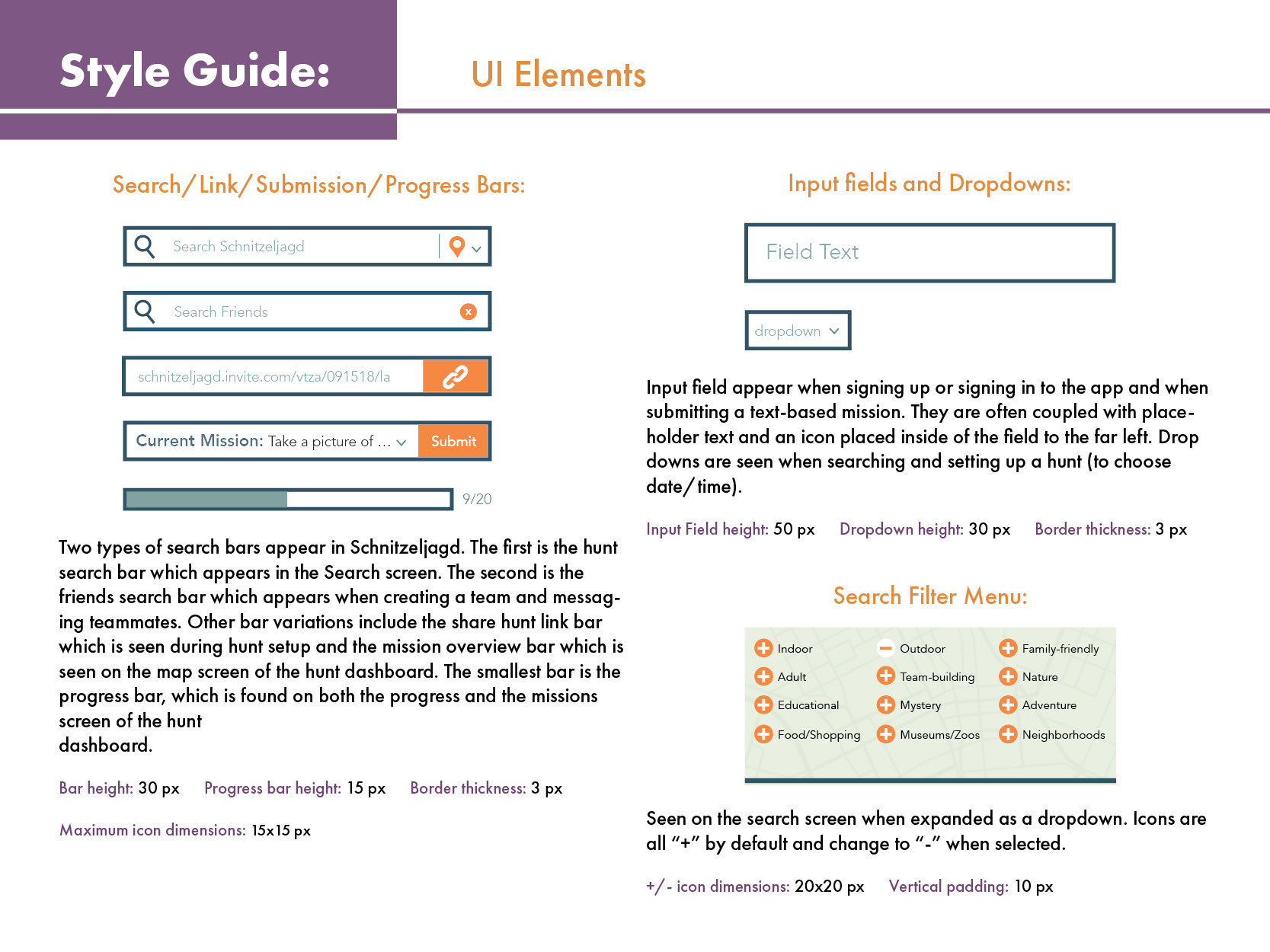
UI Elements 2
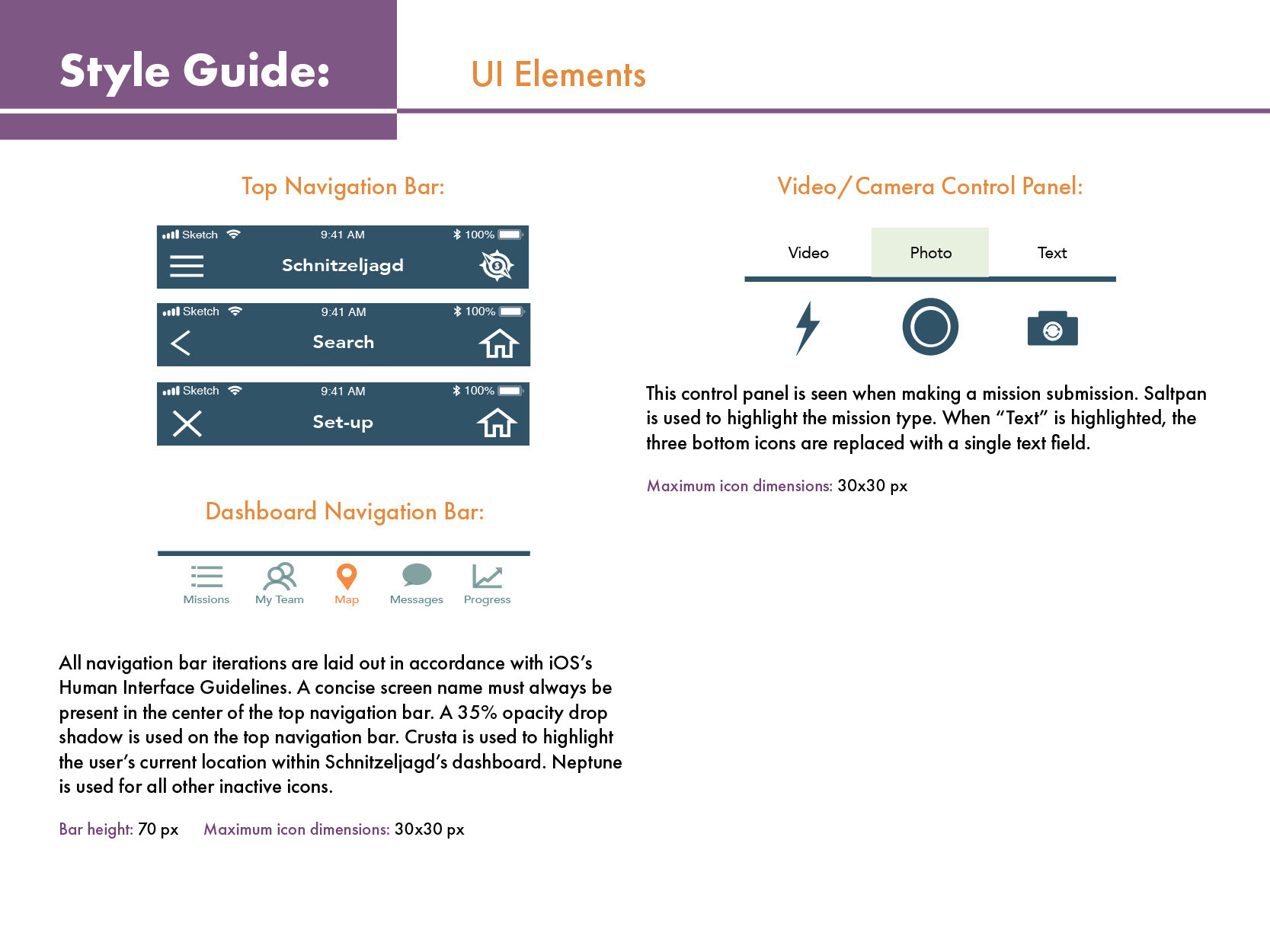
UI Elements 3

Iconography
After applying accessibility guidelines and gathering feedback from peers in the design community, Schnitzeljagd has reached its most recent iteration. Take a peek at it in the link below!
Takeaways
What went well:
1. Thorough competitor research and user interviews really paid off and gave the project a solid sense of direction. Three personas with unique needs were developed from this stage that I were each addressed while prototyping.
2. Card sorting also did a great job of forcing me to take a step back from the project. As a result, some glaring mistakes were caught in the information architecture of Schnitzeljagd before prototyping began.
3. Although some button designs and colors needed to be tweaked, the overall layout and style of Schnitzeljagd was well-received.
What can be improved:
During this project a portion of time was spent getting familiar with a range of design software. While this was an excellent learning experience, efficiency became an issue towards the late design stages. I have since learned a variety software command shortcuts and added to my library of personal assets. This should help future projects along much faster while creating and adjusting prototypes.
